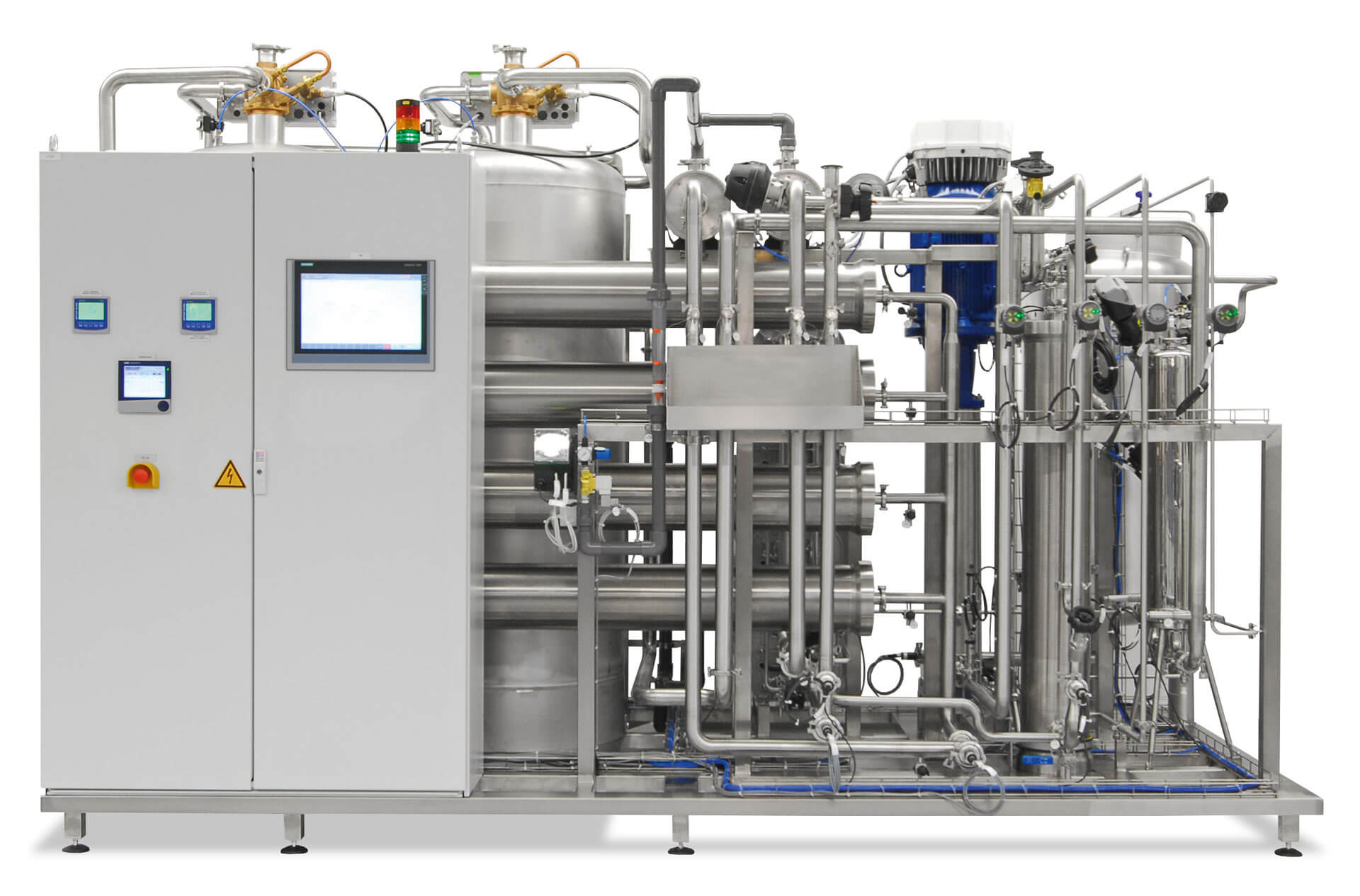


The variation in water quality standards for different applications makes it difficult to generalize about Pure Water and its treatment processes. However, Pure Water typically undergoes softening, microfiltration, ultrafiltration, degasification, and deionization stages. In applications where the removal of bacteria and viruses is important, the sequence is also likely to include UV irradiation and other sanitization capability.
Although deionization by RO and EDI is important in PW and WFI production, the role of Reverse Osmosis is not just to remove dissolved ions. Remaining bacteria, other organics and particulates are taken out with RO, following pretreatment. Naturally, for medical and a lot of pharmaceutical applications, bacterial content must be rigorously controlled and sanitization is common practice here. This can be achieved chemically, by ozone or hydrogen peroxide treatment for example, or by high temperature flush-through, often using hot water or even steam.
For pharmaceutical systems, in addition to removing these impurities in accordance with the appropriate legal criteria, it is important that systems are strong in terms of reproducibility, reliability, monitoring and recording.
The pharmaceutical industry and health care applications, such as Renal Dialysis, alone have standards defined by legal specifications (pharmacopoeias). All other industries set water standards to meet the commercial and practical requirements of their manufacturing operations. Apart from the introduction of Highly Purified Water (HPW) in the European Pharmacopoeia in 2002 and the abrogation in 2019, the quality requirements for pharmaceutical grades of water have not really changed in more than 150 years. Important though was the leverage of the European Pharmacopoeia (EP) and the United States Pharmacopoeia (USP) by approval of non-distillation techniques for the generation of WFI in 2017.
Typical uses of pharmaceutical waters include the preparation of medicines for parenteral administration when water is used as vehicle (WFI in bulk) and for dissolving or diluting substances or preparations for parenteral administration (sterilized water for injections).
Water for Injection (WFI) is one of the most common utilities in pharmaceutical applications Initially, all WFI was produced by distillation. Multi-effect and Vapor Compression (or Thermo-compression) distillation equipment continues to be developed and used for producing WFI but the basic design principles have not changed. In Europe, multiple-effect stills have been widely used but they require higher pressure plant steam and typically a higher grade of feed water than vapor compression technology.
Since 2017 however non-distillation systems (purification processes equivalent to distillation (such as reverse osmosis coupled with appropriate techniques)) are allowed in Europe to equal USP requirements.
THE MAIN IMPURITIES PRESENT IN WATER CAN BE DIVIDED INTO THREE CATEGORIES:
Skid –mounted PW and WFI systems – Over recent decades there has been a significant change in the design of Purified Water (PW) (and WFI) equipment, both in generation and storage and distribution systems. Because each design is rarely a one-off, the systems have become more reliable and the use of standard systems has greatly improved cost-effectiveness. It has also made it possible to make Factory Acceptance Testing (FAT) more extensive and effective. Most of the Installation Qualification (IQ) and Operational Qualification (OQ) protocols can be carried out by Pure Water Group prior to the equipment being shipped to site.
As we have indicated, the almost universally accepted combination of technologies is Pre-treatment, RO (sometimes a second RO stage is necessary) and EDI. Often UV light irradiation is included after the EDI unit. Subsequently, to produce WFI, an Ultrafiltration (UF) stage is added after the EDI unit. This second membrane stage is required to ensure that the endotoxin limit of 0.25 EU/ml can be guaranteed, irrespective of levels in the water supply.
One of the key developments in RO/EDI/UV/UF systems for WFI is that all technologies can now be hot-water sanitized at 85°C +/- 5°C.
l, measured as Total Organic Carbon (TOC)
